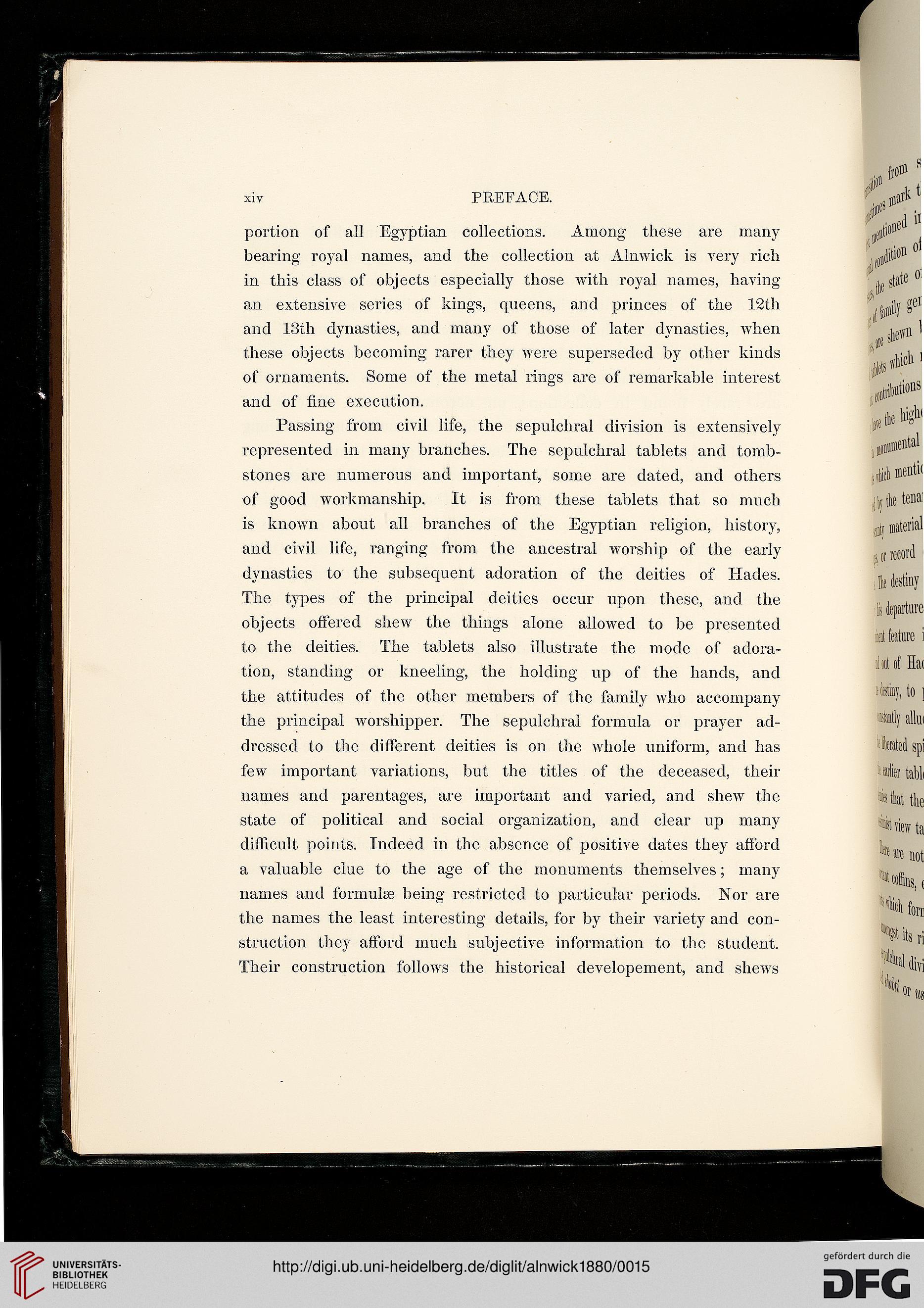xiv
PREFACE.
portion of all Egyptian collections. Among these are many
bearing royal names, and the collection at Alnwick is very rich
in this class of objects especially those with royal names, having
an extensive series of kings, queens, and princes of the 12th
and 13th dynasties, and many of those of later dynasties, when
these objects becoming rarer they were superseded by other kinds
of ornaments. Some of the metal rings are of remarkable interest
and of fine execution.
Passing from civil life, the sepulchral division is extensively
represented in many branches. The sepulchral tablets and tomb-
stones are numerous and important, some are dated, and others
of good workmanship. It is from these tablets that so much
is known about all branches of the Egyptian religion, history,
and civil life, ranging from the ancestral worship of the early
dynasties to the subsequent adoration of the deities of Hades.
The types of the principal deities occur upon these, and the
objects offered shew the things alone allowed to be presented
to the deities. The tablets also illustrate the mode of adora-
tion, standing or kneeling, the holding up of the hands, and
the attitudes of the other members of the family who accompany
the principal worshipper. The sepulchral formula or prayer ad-
dressed to the different deities is on the whole uniform, and has
few important variations, but the titles of the deceased, their
names and parentages, are important and varied, and shew the
state of political and social organization, and clear up many
difficult points. Indeed in the absence of positive dates they afford
a valuable clue to the age of the monuments themselves; many
names and formulae being restricted to particular periods. Nor are
the names the least interesting details, for by their variety and con-
struction they afford much subjective information to the student.
Their construction follows the historical developement, and shews
PREFACE.
portion of all Egyptian collections. Among these are many
bearing royal names, and the collection at Alnwick is very rich
in this class of objects especially those with royal names, having
an extensive series of kings, queens, and princes of the 12th
and 13th dynasties, and many of those of later dynasties, when
these objects becoming rarer they were superseded by other kinds
of ornaments. Some of the metal rings are of remarkable interest
and of fine execution.
Passing from civil life, the sepulchral division is extensively
represented in many branches. The sepulchral tablets and tomb-
stones are numerous and important, some are dated, and others
of good workmanship. It is from these tablets that so much
is known about all branches of the Egyptian religion, history,
and civil life, ranging from the ancestral worship of the early
dynasties to the subsequent adoration of the deities of Hades.
The types of the principal deities occur upon these, and the
objects offered shew the things alone allowed to be presented
to the deities. The tablets also illustrate the mode of adora-
tion, standing or kneeling, the holding up of the hands, and
the attitudes of the other members of the family who accompany
the principal worshipper. The sepulchral formula or prayer ad-
dressed to the different deities is on the whole uniform, and has
few important variations, but the titles of the deceased, their
names and parentages, are important and varied, and shew the
state of political and social organization, and clear up many
difficult points. Indeed in the absence of positive dates they afford
a valuable clue to the age of the monuments themselves; many
names and formulae being restricted to particular periods. Nor are
the names the least interesting details, for by their variety and con-
struction they afford much subjective information to the student.
Their construction follows the historical developement, and shews




